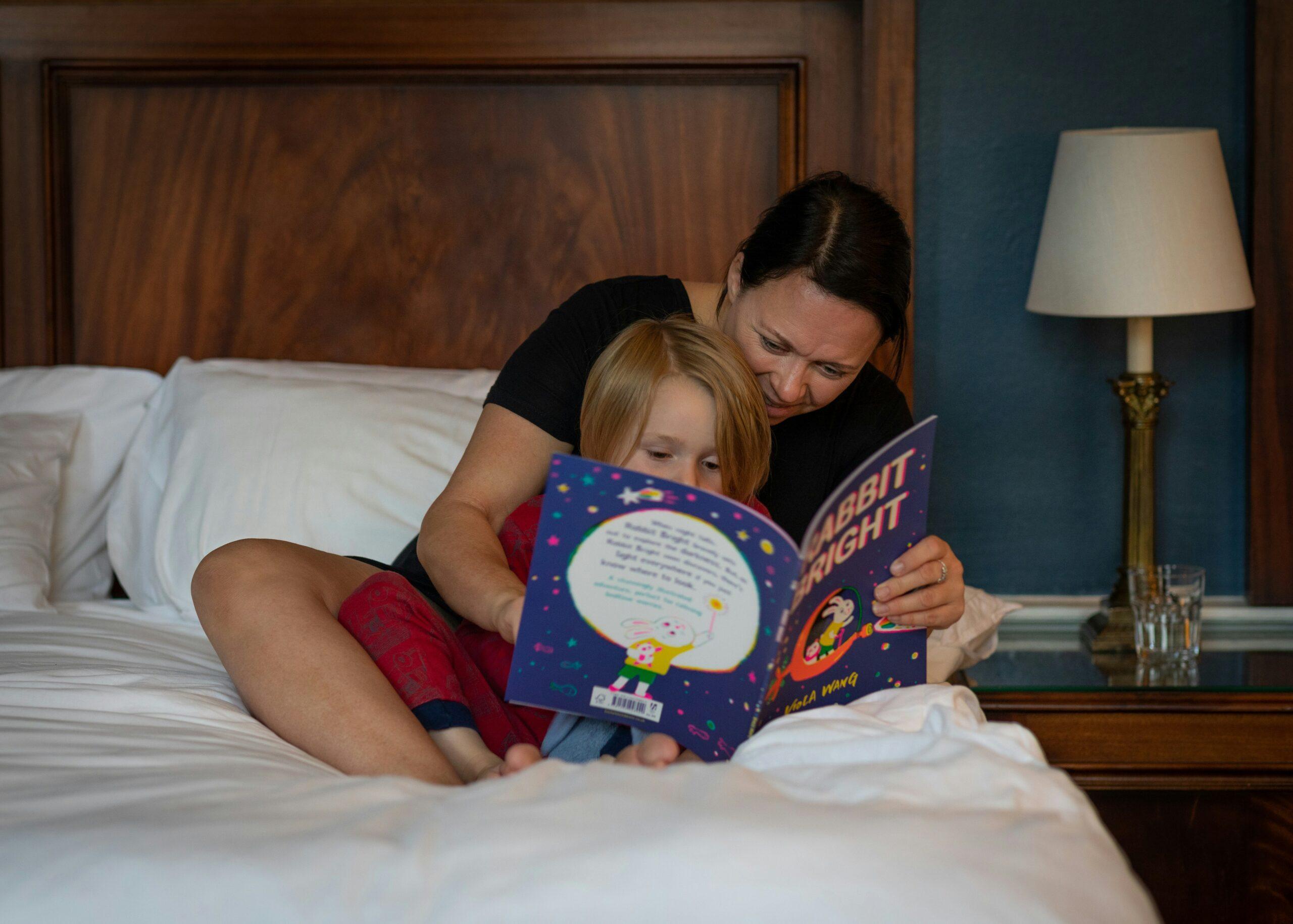We all need sleep, but some children resist sleep with a ferocity of someone twice their size. But, there are ways to help bring peace to your evening routine. It may take some effort and consistent, but it can be done. You’ll find that, as you help your child develop healthy sleep habits, everyone in your household will get better sleep.
A Consistent, Calming Bedtime Routine
Children learn and thrive off of repetition and routine. A consistent routine performed at the same time, done in the same order every single day, can help the developing brain learn how to release sleep hormones at the correct time.
A warm bath, reading a book, and listening to quiet music can help bring down your child’s activity level down. Some parents set all activities in their children’s bedtime routine to calming music so that the child knows when to move to the next activity in the routine as each song changes. Whatever you choose to include, it should help your child calm down and prepare for sleep.
A Regular Bedtime
The human body naturally follows 24-hour cycles called circadian rhythms that control metabolism, appetite, and the release of hormones to control the sleep-wake cycle. Going to bed and waking up at the same time every day supports and strengthens your child’s response to these rhythms.
A Supportive Sleep Environment
Your child’s bedroom can help or hinder his ability to sleep. A comfortable mattress that’s free from lumps, sags, and tags prevents sleep disruptions. However, the body needs more than comfort for healthy sleep.
Light heavily influences the circadian rhythms, which means the room needs to be as dark as possible. That might mean blackout curtains, heavy drapes, or blinds to keep light pollution or moonlight out of the bedroom. A night light kept low to the ground can help little ones who may be afraid of the dark.
The bedroom should also be kept at a cool 60 to 68 degrees to support the drop in body temperature necessary for the onset of sleep.
Physical and Emotional Comfort
Separation anxiety and active imaginations get the way of sleep for many children. A favorite blanket or comfort object can offer reassurance if your child gets anxious at night. Make sure the item is free of buttons, ribbons, or beads that could pose a choking or strangulation hazard.
Turn Off Screens Early and Remove Them from the Room
Televisions, iPads, and smartphones can emit a blue light that suppresses sleep hormones. For some children, even the possibility of access can get in the way of falling asleep. Try turning off devices two to three hours before bed and remove them from the bedroom.
Be Patient
This might be one of the hardest things to do when you’re helping your child develop new habits. It takes time for a consistent bedtime and routine to take hold, and some children resist it more than others. If after following healthy sleep habits for several weeks your child still struggles to fall asleep, you may want to with your child’s physician about further measures or a possible sleep disorder.
Learning healthy sleep habits will set up your child for long-term sleep success. A well-rested child can grow and learn without sleep deprivation getting in the way.



